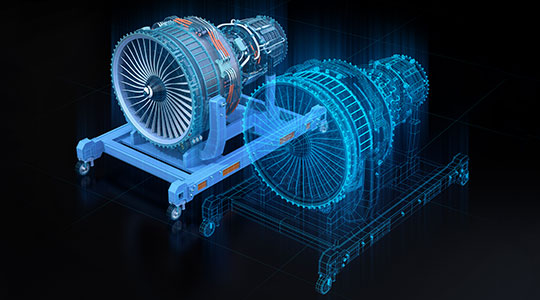 Sedaro is a startup focused on the application of digital twins for simulation technology, breakthrough designs and optimized performance of spacecraft.
Sedaro is a startup focused on the application of digital twins for simulation technology, breakthrough designs and optimized performance of spacecraft.
Constellations spoke with Robbie Robertson, CEO of Sedaro, a startup dedicated to engineering simulations and virtualization with digital twins in the cloud. The discussion covered the characteristics and capabilities of digital twins, the challenges of integrating hardware systems and how digital twins can be used to develop and advance spacecraft.
Applying Software Capabilities to Hardware
Put simply, “digital twins are virtual representations of physical systems,” says Robertson. It’s the next step in virtualization and modeling, but one where the data generated from the simulation is authoritative.
There are elements of physical, hardware systems that are inherently limiting, says Robertson. “There are a lot of things about software that you just can’t replicate with hardware,” he explains. “The development process for software and the infrastructure that supports software, particularly cloud software, web applications, is so incredibly integrated and collaboratively developed and just inherently scalable. And that’s a benefit.”
Successfully applying this same level of integration and collaborative development to hardware systems is one of the barriers to using digital twins widely in the space sector. “There are many things about the whole software ecosystem and the development process behind it, which has been conducive to that massive and kind of surprising level of innovation and new technologies,” Robertson says. “We want to apply that to hardware.”
Moving on From the ‘Legacy Approach’
The legacy approach to managing satellites and space missions involves many disparate hardware systems that are unable to talk to each other. One step towards improving this network of existing hardware systems is building a virtual model that accurately reflects each disparate step of the process. That’s where digital twins come in: building physical, hardware systems with the same level of integration as software systems.
“It’s extremely difficult to do [this] with physical systems relative to software systems,” Robertson says, “because physical systems are dominated by physics. A lot of disparate physics drive the performance of this system.” Complex hardware systems for space may be designed according to thermal orbit dynamics or aerodynamics, or any other number of physics, he explains, which makes it difficult to integrate into a single system.
According to Robertson, the biggest obstacle to this type of integration is not technical feasibility but the cultural barrier. “The most substantial limitation is the change involved in adopting this new approach,” he says. “The goal … is pushing through that cultural technical inertia behind the legacy tools and building something completely from scratch that will be future proof.”
Digital Twin Modeling to Develop and Advance Spacecraft
In managing these disparate systems, Sedaro uses a “Git-based system to manage multi-physics” that involves “fully integrated interdisciplinary models of the space vehicles and of all of the scenarios that they want to exercise those space vehicles in.”
Robertson hopes that digital twins will increase the automation and overall capabilities of spacecraft. For example, a digital twin could train an AI to launch and manage a whole network of hundreds of satellites, as some satellite operators proposed years ago. “You can’t have an operator sitting at the console and a team of experts behind it who built that spacecraft for every single vehicle that you have up there,” Robertson says. “Whether it’s a big constellation or a fleet of autonomous trucks or whatever it might be, you need greater automation.”
Looking Forward: The Government and Commercial Sector
The government remains the leading customer for digital twin models, as “the government has more of a mandate to carry out this digital transformation,” Robertson says. “They have the most complicated, largest systems. They have the most benefit from integrating those systems and managing the complexity of decision-making.” For example, the Space Development Agency will use digital twins to manage their planned network of military satellites in LEO, and Sedaro recently contracted with the U.S. Space Force on Tetra 5, a project for on-orbit refueling of small satellites in GEO.
Some commercial sectors, like the automotive industry, are also using digital twins to create virtual environments and generate synthetic digital twin data models to train AI for autonomous driving. Other commercial companies interested in digital twins include “legacy prime contractors—large software companies doing government contracting work.”
Going forward, digital twin technology will “prove to be enterprise software,” says Robertson. “Modeling and simulation is [sic] no longer going to be something that is siloed and kind of ad hoc and bespoke for each small group or individual within an organization.”
For the entire discussion on digital twins and how they are changing the space sector, click here.
Explore More:
What Is a Digital Service? Just Ask the U.S. Space Force’s CTIO, Dr. Lisa Costa
‘We Love Humans, But…’: The Future of Robotic Commercial Space Stations
Will Software-Defined Networking Unlock the All-Domain Battlespace?
Space ISAC Threat Briefing 6: ESXiArgs: Critical VMware Vulnerabilities Exploited in Ransomware Campaign
